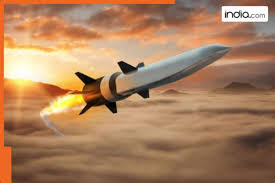Iskander-M

- 08 Feb 2025
In News:
In a significant defense development with wide-ranging geopolitical implications, the Russian Federation is preparing to mass-produce the Iskander-M tactical ballistic missile, a new-generation weapon system with enhanced range and destructive capabilities. This move is part of Russia’s broader strategy to upgrade its missile arsenal amid ongoing tensions with NATO, especially in the context of the Ukraine conflict.
Key Features and Strategic Purpose
The 9K720 Iskander-M, developed by the Machine-Building Design Bureau (Kolomna), is a medium-range tactical ballistic missile with an effective range of up to 1,000 kilometers. It is capable of delivering both conventional and nuclear warheads, making it a versatile and high-impact weapon in regional conflict scenarios.
- The missile is precision-targeted and designed to neutralize high-value enemy assets, including NATO’s military infrastructure in Eastern Europe, especially in Ukraine.
- The production of the upgraded missile, unofficially referred to as the Iskander-1000, is expected to begin in full swing by 2025.
- The missile is reported to be highly destructive, with the ability to conduct deep strikes with minimal detection, offering Russia a tactical advantage in asymmetric warfare.
Deployment of Oreshnik Missile Systems in Belarus
In a parallel development, Russia has confirmed the deployment of Oreshnik medium-range ballistic missile systems in Belarus, a strategic ally. This decision follows agreements between the Russian and Belarusian leadership, reinforcing the military integration under their collective defense pact.
- The Oreshnik system, though less publicly detailed than the Iskander, is designed for tactical use and contributes to enhancing Russia’s regional defense shield.
- According to Russian foreign ministry officials, Belarus already hosts a joint Regional Forces Group, non-strategic nuclear weapons, and modern Russian defense systems.
- The positioning of these systems near NATO’s eastern borders heightens tensions with Western powers, particularly the United States, Poland, the Baltic States, and the European Union.
Geopolitical Ramifications
The Iskander-M and Oreshnik missile programs are part of Russia’s strategic doctrine to deter NATO's influence and reassert its military dominance in Eastern Europe. These deployments are:
- Likely to escalate NATO-Russia tensions, increasing the risk of a regional arms race.
- Expected to complicate European security dynamics, especially in Poland, Ukraine, and the Baltic states, which are seen as potential frontlines.
- Raising the prospect of further military escalation in the ongoing Russia-Ukraine conflict.
- Prompting NATO countermeasures, including deployment of missile defense systems and increased troop presence near Eastern borders.
